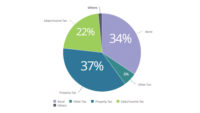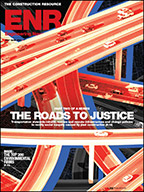
Citing high driver fatality rates, increasing energy- and agriculture-related freight movements and the recent devastation of Hurricane Irene, transportation construction officials are using a Sept. 1 report to emphasize the potentially devastating effects of delaying federal funding reauthorization on the nation’s rural populations.
The nation’s rural roads and bridges are rapidly deteriorating, driving the fatality rate along back roads to triple the national average for highway fatalities.
That analysis was part of a new report on rural road conditions, “Rural Connections: Challenges and Opportunities in America’s Heartland,” released by TRIP, a national transportation research group.
Decrying some politicians’ calls to eliminate the federal transportation trust fund, the American Association of State Highway and Transportation Officials (AASHTO), the Associated General Contractors of America (AGC) and the American Road and Transportation Builders Association (ARTBA) called on Washington to pass a full six-year bill—legislation that has been delayed for two years.
“Killing funding for our aging roads and bridges would be tantamount to economic malpractice,” said Stephen E. Sandherr, AGC chief executive officer, at a Sept. 1 press conference. Instead, he urged Congress to quickly pass new long-term legislation that would, among other things, help improve the nation’s rural roads and bridges. “The best way to boost our economy, support private sector growth and cut unemployment is to pass a new surface transportation bill.”
The report found that the highway fatality rate on the nation’s rural roads was 2.31 deaths for every 100 million vehicle miles of travel, three times the fatality rate on all other roads. The report also found that 55 percent of the nation’s rural roads were rated poor, mediocre or fair. And 23 percent of rural bridges were either structurally deficient or functionally obsolete.
TRIP’s report found that Vermont and Idaho have the highest percentage of rural roads in poor condition—a statistic made all the more timely considering that almost 100 road segments or bridges were closed down due to Irene. Five bridges and 20 road segments reopened as of Aug. 30, according to the Vermont Agency of Transportation.
“The back roads of America shouldn’t be on the back burner of public policy priorities,” said Brad Sant, American Road & Transportation Builders Association Vice President of Safety and Education. “Making the investments necessary to ensure rural roads are safer and more forgiving is the responsibility of elected officials at all levels of government.”
Frank Moretti, TRIP’s director of policy and research, noted that much of the danger of driving on rural roads could be mitigated through simple construction activities such as placing rumble strips, paving shoulders, smoothing out sharp curves, and widening lanes. “Half of all traffic fatalities in the nation occur are happening on those roads, yet they carry one-quarter of the nation’s total traffic,” he said.
“The state of rural roads is distressingly bad,” said Sandherr. “Considering the findings, millions of people heading to beach or mountains this weekend might think twice about their route.” But the far greater impact occurs on the national economy, he added. “Farmers can’t profit if their produce is in trucks detouring around closed bridges. Shippers suffer when just-in-time deliveries arrive late.” The report found that trucks carry 46% of the nation’s agricultural produce, which often come from rural areas.
“These are lives we’re talking about,” added John Horsley, AASHTO executive director. “Twenty percent of the national population lives in rural areas. They are more dependent on roads…and those states are more dependent on federal assistance to build and maintain their roads. Fifty percent of their funds from the federal program.”
While funding mechanisms such as P3s, raising local fuel taxes and tolling, can help fund major urban projects, there is not enough population density for them to work for rural road projects, he noted.
Moretti noted that the World Economic Forum in 2008 ranked America 6th in terms of quality of national infrastructure, but that it is now ranked 16th .
The groups called for a “balanced” program between urban and rural, and highway and other modes of transportation, with more flexibility for states to spend their federal allocations.
The highway trust fund has been depleting due to the lack of raising federal fuel taxes to keep pace with inflation. Referring to the anti-tax sentiment, Sant said: “All taxes are not created equal. If a house is coming apart, you don’t spend your budget on new furniture. You fix the roof so that you can protect the other assets inside lest they get damaged and fall apart… We articulate that investment in infrastructure is like repairing the roof on the house.”





Post a comment to this article
Report Abusive Comment